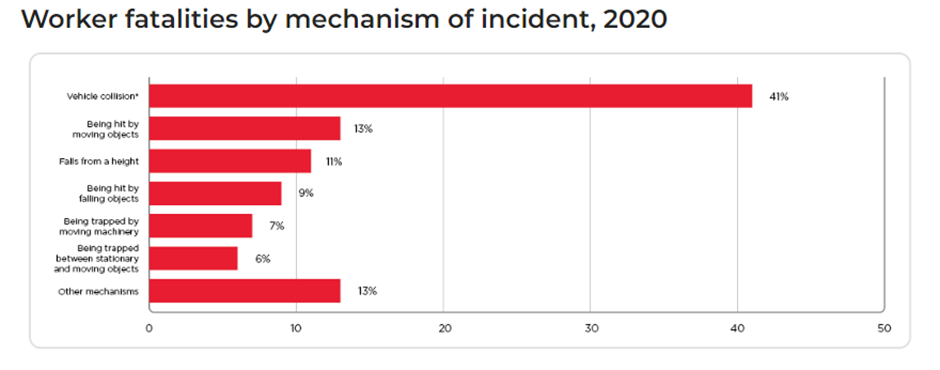Proximity Detection Systems in the Workplace
Modern proximity warning systems enable safer, more predictable work environments.
Proximity warning technology, also known as proximity detection technology, is an important tool for keeping workers safe in environments with hazardous areas, moving objects, and vehicles. This technology can alert workers when they are too close to a dangerous area or piece of equipment, and it can provide valuable insights to duty holders on near misses to create safer future work practices.
These systems are especially necessary in the construction and heavy engineering sectors since inadequate proximity warning can have devastating consequences. In 2020, there were 194 worker fatalities across Australia, and 13% of them were caused by being hit by moving objects. Furthermore, 16% of the 120,355 serious claims filed in 2020 were also due to being hit by moving objects, resulting in more than 19,000 workers injured every year due to insufficient or non-existent proximity warning systems*.

However, choosing the right proximity warning system for your team poses certain challenges, and not all technologies are equal. Your technology needs to keep your workers safe while allowing them to work effectively. This is where advanced modern technology, such as R-Link, can make a difference.
Why Customisation is Key when it Comes to Proximity Detection Technology
Reactec’s R-Link uses the latest ultra-wideband technology for fast and accurate detection. Additionally, R-Link allows you to implement access restrictions that respond to individual worker credentials. This allows you to control proximity on a person-by-person basis. For example, equipment operators or essential personnel can be granted access to certain areas and plants, while non-essential personnel can be restricted from those same areas. Credentials can be updated at any time, enabling easy control or updates to who has access to specific areas or equipment on a day-to-day basis.
R-Link’s proximity technology ensures that different team members receive customized warnings and permissions based on their specific roles and needs. The pedestrian smartwatch can be personalized with configurable alerts for an individual worker, while the driver watch auto-pairs with your vehicle, allowing the driver to receive configurable warnings of pedestrian incursions and give an electronic 'thumbs-up' to allow proximity when necessary, on an as-needed basis. Moreover, all these actions are carried out right from the watch on the driver's wrist.
Additionally, R-Link is designed to make it easy and convenient to give, restrict, or change access to areas or equipment. In many cases, these permissions can be controlled or changed directly from your smartwatch in real-time.
R-Link from Reactec is now available to purchase or hire. If you also need hand-arm vibration monitoring, the R-Link smartwatch also provides real-time alerts for vibration levels.
Contact us now for more information or to book your demonstration.
*Statistics from Safe Work Australia who compiles the Work-related Traumatic Injury Fatalities data set which provides national statistics on all workers and bystanders fatally injured at work. Initial reporting of fatalities in the media or on relevant authority websites such as police, road authorities and the Australian Transport Safety Bureau notifications to Safe Work Australia from the jurisdictional authorities, and the National Coronial Information System which provides confidential access to coroners’, police and other investigative reports.
Work-related fatalities resulting from diseases, natural causes and suicides are excluded. Further explanatory notes on the data can be found in the Explanatory notes for Safe Work Australia datasets.